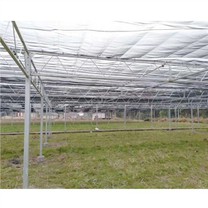Introduction of glass greenhouse
Transparency
The greenhouse is a lighting building, so the light transmittance is a basic indicator for evaluating the light transmittance performance of the greenhouse. Light transmittance refers to the percentage of the amount of light that penetrates into the greenhouse to the amount of light outside. The light transmittance of the greenhouse is affected by the light transmittance of the greenhouse light-transmitting covering material and the shadow rate of the greenhouse skeleton, and with the different solar radiation angles in different seasons, the light transmittance of the greenhouse is also changing at any time. The level of light transmittance in the greenhouse has become a direct factor for crop growth and selection of plant varieties. Generally, the multi-span plastic greenhouse is 50%~60%, the light transmittance of the glass greenhouse is 60%~70%, and the solar greenhouse can reach more than 70%.
thermal insulation
Heating energy consumption is the main obstacle to the operation of greenhouses in winter. Improving the thermal insulation performance of the greenhouse and reducing the energy consumption are the direct means to improve the production efficiency of the greenhouse. The thermal insulation ratio of the greenhouse is a basic indicator to measure the thermal insulation performance of the greenhouse. The greenhouse insulation ratio refers to the ratio of the coverage area of the greenhouse light-transmitting material with a smaller thermal resistance to the total area of the greenhouse envelope with a larger thermal resistance. The larger the thermal insulation ratio, the better the thermal insulation performance of the greenhouse.
Durability








